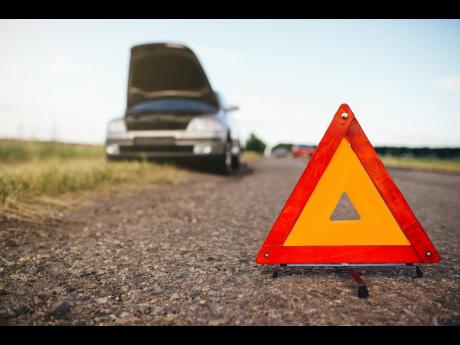How to check the condition of your car
Have you checked your car lately? Have you checked for safety, which will result in saving lives, precious time, and valuable money? “To prevent your motor vehicle endangering lives, we must ensure that it is in good working order,” advised Kurt Harding, an experienced St Andrew-based auto mechanic. Certainly, the basis of a well-maintained car is a well-tuned engine. So the driver must be cognizant of faulty detection, defects and their effects on safety, use of safety equipment, emissions, and unusual sounds.
Check your vehicle for safety to reduce:
1. Tyre blowouts
2. Brake failures
3. Power failures
4. Windshield wiper problems
5. Headlight, taillight, and turn-signal problems.
For the tough-talking tyres: If you feel or hear any unusual thumping while driving, check your tyres. Cuts, bumps, or bad tread can cause blow-outs. Your tyre pressure should be checked quite often as well and should be done when tyres are cold. Check the owner’s manual for the right tyre pressure or ask advice from a trusted auto mechanic.
For the hard-working brakes: Remember that you should be able to stop smoothly and quickly. If your car pulls to one side when stopping, have those brakes checked without delay. Also, after driving through water, pump your brakes gently to test them and dry them out. You should be able to stop 25 feet at 20 miles per hour. Try this out in an empty parking lot. Make chalk marks on the surface to see if you can stop within that distance.
The active turn signals: You should be able to hear the clicking and see the lighted arrows flash on your dashboard. If you cannot, get the signals repaired as soon as possible. Also, don’t forget that you can still use your hand signals.
The vital brake lights: If your brake lights are not operational, someone may crash into you from the rear. Have someone help you check them. Replace the broken light covers as they may cause a glare, which could affect the driver behind you.
Those quiet but effective tail lights: Always keep tail lights and side lights in working order. “They signal other drivers in the dark and prevent accidents,” says Harding.
The terrifying horn: Do not overuse those horns, whether day or night. Check it quite often to ensure its working. Use the horn when passing or coming out of a blind alley. And be reminded of areas where the honking of horns is prohibited such as hospitals, courthouses, and churches.
The brave headlights: It is best to ensure that your bright and dim lights are working and in line. Check them against a garage wall or on a parked car. In addition, keep your headlight lens clean as a whistle.
The all-important back-up lights: When driving in reverse, your back-up lights should be on. Check them regularly to ensure that all is well.
The assertive windshield: Cracks or chips in your windshield could cause it to break. Have them repaired. Keep those windshields clean inside out. Also ensure that the windshield wipers are working.

